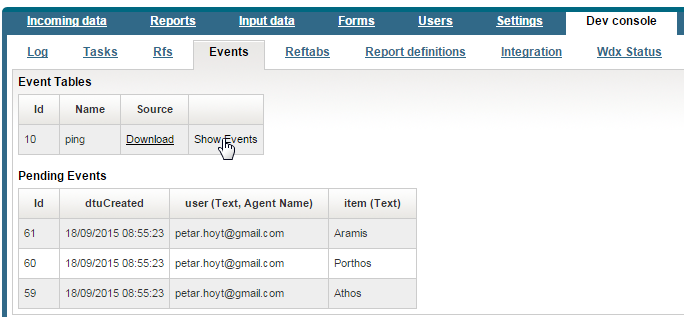Reference data that the forms assigned to your mobile users need access to are continuously synchronized to their mobile clients to allow offline workflow management. Due to mobile network issues such as coverage, bandwidth, or poor mobile internet speed, the time it takes for a change in the reference data to be downloaded to affected users' mobile clients may vary considerably. This is usually more an inconvenience than a problem, but certain workflows may need to be aware whether a given change to the reference data has been synchronized to or acknowledged by one or more users' mobile clients.
To accommodate such workflow management demands, workflow scripts may create one or more synchronization events. To accompany event source scripts, you will practically also need to create a so-called event handler script that will be triggered when the synchronization event that was created is fired on the server.
When created, sync events are inserted into a synchronization events table that determines
the number and data type of their optional fields, but all sync events have an assigned
user. To be able to identify the user that is assigned to an event, all synchronization
events tables need to have exactly one Column element with the
AgentName="true" attribute declared.
Every time the mobile client of the user assigned to an event completes a synchronization cycle with the server, every synchronization event that was created since the most recent previous synchronization fires one by one, triggering the event handler workflow script that you have set up for these events.

